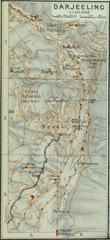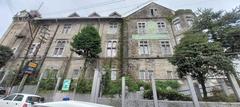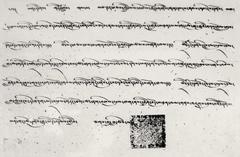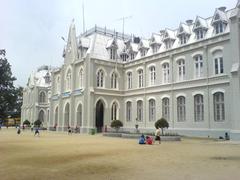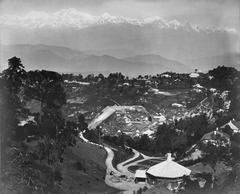Himalayan Tibet Museum Darjeeling: Visiting Hours, Tickets, and Guide to Historical Sites
Date: 14/06/2025
Introduction
Perched in the scenic hill town of Darjeeling, the Himalayan Tibet Museum is a cultural cornerstone dedicated to preserving and celebrating the heritage of Tibetan civilization. Established in the wake of the 1950s Tibetan diaspora, it not only chronicles the Tibetan refugees’ journey but also highlights the interconnected histories and traditions of the Himalayan region. Its prime location at 12 Gandhi Road, near Chowrasta Mall, offers breathtaking Himalayan vistas and convenient access for visitors.
The museum’s architecture harmoniously fuses traditional Tibetan motifs—such as ornate woodwork, multi-tiered sloping roofs, and auspicious symbols—with local Himalayan influences. Inside, visitors embark on a curated exploration of Tibetan spirituality, history, art, and daily life through thangka paintings, sand mandalas, ritual masks, manuscripts, and authentic costumes. Interactive multimedia displays and a dedicated research library further enrich the experience.
Operating daily from 10:00 AM to 5:00 PM (closed Mondays and select public holidays), the museum features accessible facilities, guided tours, and clear photography guidelines. Its vibrant role extends to community engagement, hosting cultural workshops, festivals, and educational programs, making it a must-visit for cultural enthusiasts and travelers alike.
This guide provides thorough insights into the museum’s history, collections, visitor amenities, and nearby attractions, helping you plan an immersive visit to this unique cultural institution. For further details, consult sources such as Holidify, TripXL, and Darjeeling Tourism.
Contents
- Introduction
- History and Significance
- Location and Accessibility
- Architectural Features
- Collections and Exhibits
- Permanent and Temporary Exhibitions
- Visitor Information
- Facilities and Amenities
- Visitor Experience and Engagement
- Nearby Attractions
- Travel Tips
- Safety and Security
- Sustainability and Community Involvement
- FAQs
- Plan Your Visit
- Conclusion
- References
History and Significance
The Himalayan Tibet Museum was established to conserve and promote Tibetan culture in India, particularly after the 1950s influx of refugees following Tibet’s annexation by China. It serves as a testament to Darjeeling’s role as a sanctuary and cultural hub for Tibetans, working in synergy with institutions like the Tibetan Refugee Self-Help Centre and local monasteries. The museum documents the multifaceted journey of Tibetan settlers, preserving their spiritual, artistic, and social traditions for posterity (TripXL; Roamingverse).
Location and Accessibility
Strategically located at 12 Gandhi Road, Limbugaon, the museum offers panoramic Himalayan views and is a short walk from Chowrasta Mall, Darjeeling’s vibrant center (Holidify). The museum is easily accessible on foot, by taxi, or shared jeep. Most central hotels are within walking distance, and the Darjeeling Bus Terminal is approximately 2 km away (travel.india.com).
For those with mobility needs, the museum includes ramp access and seating areas. Multilingual signage in English and Tibetan helps all visitors navigate the space (Roamingverse).
Architectural Features
The museum’s design is a blend of traditional Tibetan and local Himalayan styles:
- Façade: Adorned with vibrant colors, intricate woodwork, and symbols like lotus flowers and endless knots (TripXL).
- Sloping Roofs: Multi-tiered, sloped roofs are built to withstand heavy Himalayan rainfall.
- Ornamental Details: Hand-carved windows and doors, painted in reds, yellows, and blues, evoke Tibetan monastic aesthetics (Wanderlog).
- Courtyard and Prayer Flags: Colorful prayer flags and a tranquil courtyard create a contemplative atmosphere (Evendo).
Collections and Exhibits
Religious and Cultural Artifacts
- Thangka Paintings: Detailed scrolls depicting Buddhist deities, mandalas, and narrative scenes (Evendo).
- Sand Mandalas: Intricate, symbolic works representing impermanence.
- Statues and Ritual Masks: Used in Tibetan religious ceremonies, merging Buddhist and Bon traditions.
Everyday Tibetan Life
- Handicrafts and Utensils: Gold-copperware, traditional costumes, and domestic objects.
- Photographs and Documents: Archival materials telling the story of Tibetan migration and settlement.
Unique Features
- 3D Map of Tibet: An interactive overview of Tibet’s geography and historical significance.
- Stupa Models: Showcasing Buddhist architectural forms.
Other Highlights
- Ancient Manuscripts: Rare texts on Buddhist teachings and Tibetan medicine.
- Dalai Lama’s Contributions: Artifacts donated by His Holiness add historical resonance (TourTravelWorld).
- Multimedia and Interactive Displays: Documentaries and digital presentations provide context (Holidify).
- Library and Research Center: Open to scholars and students, focusing on Tibetan history and culture (Roamingverse).
Permanent and Temporary Exhibitions
Permanent galleries cover themes such as:
- Tibetan Buddhism: Origins, philosophy, and rituals.
- Diaspora Stories: Artifacts and narratives of Tibetan refugees (Roamingverse).
- Art and Craftsmanship: Thangkas, woodwork, and metalwork.
- Festivals and Daily Life: Objects and displays depicting ceremonies and traditions.
Temporary exhibitions often feature contemporary Tibetan art, thematic workshops, and special events in partnership with artists and scholars (Evendo).
Visitor Information
- Visiting Hours: Open 10:00 AM – 5:00 PM, Tuesday to Sunday. Closed Mondays and public holidays.
- Ticket Prices:
- Indian nationals: ₹50 (adults), ₹25 (children)
- International visitors: ₹150
- Children under 12 and seniors: Free or discounted
- Group discounts available; tickets are sold at the entrance (wanderlog.com).
- Guided Tours: Available on request; recommended to book in advance, especially for groups.
- Photography: Permitted in most areas (no flash/tripods); observe signage for restrictions.
- COVID-19 Guidelines: Follow health advisories and check for temporary changes in hours or entry rules.
Facilities and Amenities
- Restrooms: Clean and accessible.
- Seating: Benches throughout for comfortable viewing.
- Gift Shop: Sells books, souvenirs, and handicrafts supporting local communities.
- Café: Light refreshments available.
- Accessibility: Wheelchair ramps; some heritage areas may have uneven flooring.
Visitor Experience and Engagement
- Interactive Displays: Audio-visual sections for immersive learning.
- Workshops and Events: Cultural performances, talks, and hands-on workshops on Tibetan arts and festivals.
- Educational Value: Popular among school groups and researchers for its depth and accuracy.
- Cultural Pluralism: Special exhibits on the Nepali, Lepcha, Bhutia, and other communities of Darjeeling (Darjeeling Heritage).
Nearby Attractions
- Darjeeling Himalayan Railway
- Peace Pagoda
- Padmaja Naidu Himalayan Zoological Park
- Local Tea Gardens
- Tibetan Monasteries
These sites offer a well-rounded Darjeeling heritage experience and are easily combined with a museum visit.
Travel Tips
- Best Time to Visit: March–June and September–November for pleasant weather (darjeelingtourism.in).
- Plan 1–2 Hours: To explore all galleries and participate in any workshops.
- Combine Visits: Take advantage of the museum’s central location to explore Darjeeling Mall and local cafés (travel.india.com).
- Respect Guidelines: Maintain silence and follow all posted instructions, especially around religious artifacts.
- Check for Events: Inquire about seasonal exhibitions or cultural programs during your visit.
- Weather: Carry a light jacket or umbrella, especially in monsoon season.
Safety and Security
- Monitored Environment: CCTV and security staff ensure a safe visit.
- Bag Policy: Large bags must be deposited at the entrance.
- Peak Hours: For a quieter experience, visit in the morning.
Sustainability and Community Involvement
The museum actively supports the local Tibetan community through proceeds from admissions and shop sales. It funds heritage preservation and welfare projects, encouraging visitors to purchase authentic handicrafts and attend community events.
Frequently Asked Questions (FAQ)
Q: What are the Himalayan Tibet Museum visiting hours?
A: 10:00 AM – 5:00 PM, closed Mondays and public holidays.
Q: How much are tickets?
A: ₹50 (adults, Indian nationals), ₹25 (children), ₹150 (foreigners); discounts for children and seniors.
Q: Is photography allowed?
A: Yes, in most areas without flash or tripods; follow posted signs.
Q: Are guided tours available?
A: Yes, book in advance or at the ticket counter.
Q: Is the museum accessible for those with mobility challenges?
A: Yes, ramps are available, though some heritage areas may have steps.
Q: Are there food options nearby?
A: Yes, several cafés and restaurants are within walking distance.
Q: Is the museum child-friendly?
A: Yes, with interactive displays and free or discounted entry for children.
Plan Your Visit
For the latest visiting hours, ticket information, and special event schedules, consult the Darjeeling Tourism Official Website or Wanderlog. Advance bookings for guided tours can be made through the museum or local travel agencies.
Enhance your experience with the Audiala app, which offers guided audio tours and exclusive content. For more tips and detailed guides on Darjeeling’s attractions, explore our related articles and stay connected on social media.
Conclusion
The Himalayan Tibet Museum is more than a repository of artifacts—it’s a living testament to the resilience, artistry, and cultural plurality of the Himalayan region. From its thoughtfully curated exhibits and inclusive architecture to its robust educational programs and community outreach, the museum offers a deeply enriching experience for every visitor. Whether you are a historian, culture lover, or casual tourist, a visit here will broaden your understanding of the Tibetan diaspora and the vibrant mosaic of Darjeeling’s hill communities.
Plan your visit today and immerse yourself in the heritage, spirituality, and creativity that define this iconic Darjeeling destination.
